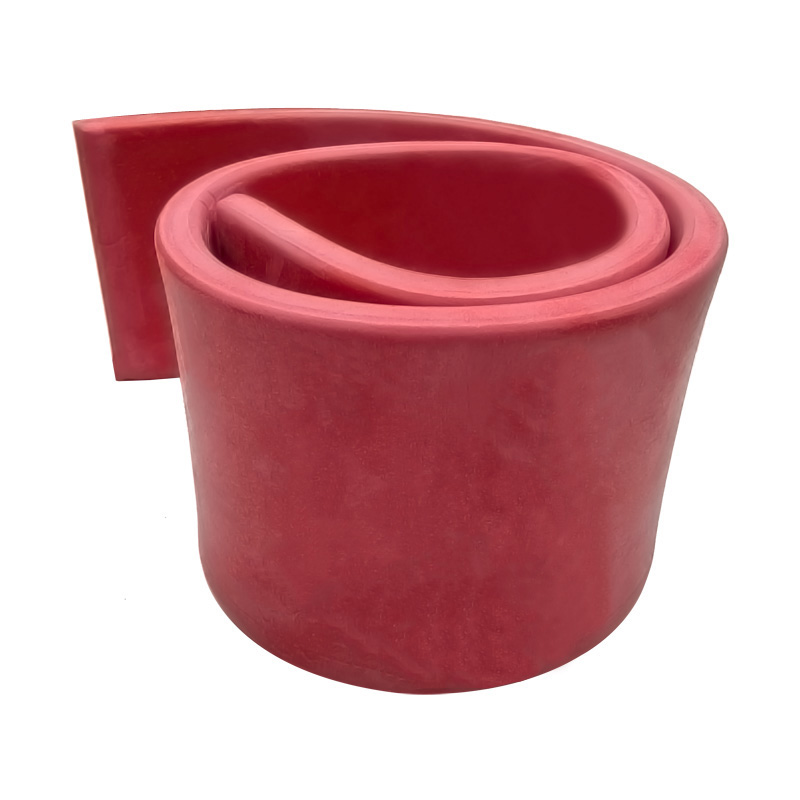Why Is BR Rubber Compound Shaping the Future of High-Performance Manufacturing?
2025-11-21
BR Rubber Compound—commonly known as Butadiene Rubber Compound—is a high-elasticity, high-resilience synthetic rubber widely used in industries that require exceptional abrasion resistance, flexibility, and long service life. As global industries continue upgrading their material requirements, BR Rubber Compound has become an essential solution for tire production, conveyor belts, industrial seals, vibration-absorbing components, footwear manufacturing, and other applications in which durability and elasticity must coexist.
Below is a professional parameter overview that reflects the technical specifications commonly expected in high-grade BR compounds:
BR Rubber Compound Technical Parameters
| Parameter | Specification Range | Industrial Significance |
|---|---|---|
| Polybutadiene Content | 90–97% | Indicates purity and elasticity level; higher content improves resilience and toughness. |
| Mooney Viscosity (ML 1+4, 100°C) | 35–70 | Determines processing behavior; affects extrusion, molding, and mixing stability. |
| Tensile Strength | 15–25 MPa | A key performance index for stress-bearing components. |
| Elongation at Break | 350–520% | Reflects flexibility and deformation capability under long-term mechanical loads. |
| Rebound Resilience | ≥ 60% | Important for tires, impact-resistant parts, and cushioning materials. |
| Abrasion Resistance | ≤ 90 mm³ loss | Lower volume loss reflects superior wear resistance. |
| Glass Transition Temperature (Tg) | –100°C to –105°C | Enables strong low-temperature performance and maintains elasticity in cold climates. |
| Density | 0.90–0.92 g/cm³ | Helps produce lightweight yet durable products. |
| Hardness (Shore A) | 45–70 | Adjustable depending on application—from soft cushioning to rigid structural rubber. |
These parameters define BR Rubber Compound’s position as a preferred choice in industries that require both mechanical durability and long-term stability. The combination of low heat buildup, high elasticity, and excellent wear resistance makes this compound essential for applications that must withstand repetitive motion, pressure, and friction.
Why Do High-Demand Industries Trust BR Rubber Compound for Performance-Critical Applications?
Modern manufacturing industries face demanding requirements: extended product lifespan, energy efficiency, global environmental regulations, and cost-effective mass production. BR Rubber Compound answers these challenges because of its unique molecular structure and the benefits it delivers across various operational environments. The following factors explain why it is increasingly selected over conventional synthetic rubbers.
Why BR Rubber Compound Has Become a Preferred Industrial Material
1. Exceptional Abrasion Resistance for High-Friction Environments
BR’s molecular architecture provides high molecular mobility, resulting in outstanding abrasion resistance. This property is vital in tire treads, conveyor belts, and industrial rollers—industries where friction destroys inferior materials. BR compounds slow down wear, reduce maintenance cycles, and extend product life.
2. Superior Elasticity and Resilience
BR Rubber Compound demonstrates excellent flexibility and rebound performance. This benefit is crucial in:
-
tires requiring low rolling resistance
-
vibration-absorbing mounts
-
shock-absorbing soles
-
sealing rings requiring flexibility under pressure
High resilience also contributes to lower energy dissipation, enhancing performance in dynamic applications.
3. Excellent Cold-Weather Performance
Because BR has a very low glass transition temperature (Tg), it remains flexible even in freezing conditions. This makes it crucial for:
-
winter tires
-
outdoor machinery
-
cold-chain conveyor systems
-
low-temperature industrial components
Materials that harden in cold environments risk cracking or losing elasticity; BR maintains stable performance.
4. Low Heat Buildup for Long-Term Operation
Heat buildup accelerates aging, reduces elasticity, and shortens product life. BR’s low internal heat generation enables:
-
long-distance tire performance
-
continuous industrial operations
-
motor vibration dampers
-
high-speed mechanical assemblies
This makes BR Rubber Compound ideal for both high-frequency and continuous-motion use.
5. Formula Flexibility for Custom Applications
Manufacturers can customize BR compounds using fillers, additives, antioxidants, and processing aids. This enables precise control over parameters such as:
-
hardness
-
viscosity
-
oil resistance
-
elongation
-
tensile strength
-
dynamic mechanical behavior
Such flexibility makes BR suitable for diverse sectors ranging from automotive to aerospace and industrial processing.
How Is BR Rubber Compound Used, Processed, and Optimized for Manufacturing Efficiency?
To maximize performance, industries require rubber compounds that process smoothly, cure efficiently, and maintain predictable mechanical characteristics. BR Rubber Compound is valued not only for its physical performance but also for its processing advantages.
How Manufacturers Use BR Rubber Compound in Production
1. Mixing and Compounding Advantages
BR blends smoothly with SBR, NR, EPDM, and other elastomers. It enhances the compound’s elasticity and reduces heat buildup during extrusion or molding.
2. Improved Extrusion and Shaping Stability
Its stable viscosity and low shrinkage improve finish quality in:
-
tire treads
-
automotive bushings
-
shoe soles
-
rubber sheets
-
conveyor components
This stability reduces waste and improves dimensional consistency.
3. Enhanced Vulcanization Performance
BR cures reliably with common vulcanizing systems (sulfur, peroxide, etc.). This leads to:
-
uniform crosslinking
-
improved tear strength
-
better fatigue resistance
-
longer service life
Manufacturers appreciate its predictable curing curve during production.
4. Application Versatility Across Industries
BR Rubber Compound is widely used in:
-
Automotive: tires, mounts, vibration dampers
-
Industrial: belts, rollers, gaskets, hoses
-
Footwear: outsoles, midsoles, cushioning components
-
Sports & Leisure: balls, grips, elastic accessories
-
Machinery: seals, buffering pads, shock-absorbing parts
Its combination of flexibility and resilience creates opportunities for innovation across multiple markets.
What Are the Future Trends of BR Rubber Compound and Why Will Demand Continue to Grow?
The global shift toward sustainable, energy-efficient, and high-performance materials is pushing industries to adopt better raw materials. Several trends indicate strong growth potential for BR compounds in the coming years:
1. Rising Demand for Low-Rolling-Resistance Tires
Automotive manufacturers aim to improve fuel efficiency and EV driving range. BR Rubber Compound significantly reduces rolling resistance while maintaining grip and durability.
2. Growth in Electric Vehicle and EV Component Markets
Electric vehicles rely heavily on rubber components that can withstand vibration, temperature changes, and dynamic loads. BR’s low heat generation and elasticity are ideal for EV bushings, seals, and tires.
3. Sustainability and Eco-Friendly Material Development
Future BR formulations are expected to incorporate:
-
reduced-VOC additives
-
bio-based processing oils
-
improved recyclability
-
enhanced aging resistance
These innovations align with global environmental regulations.
4. Advanced Industrial Automation Requirements
Industrial automation demands rubber materials capable of operating continuously under stress. BR’s wear resistance supports high-speed machinery, automated conveyors, and robotic equipment.
5. Expansion in Sports, Footwear, and Consumer Goods
As consumer industries increasingly seek durable, lightweight, and comfortable materials, BR Rubber Compound continues to grow in popularity.
Common Questions About BR Rubber Compound
Q1: What makes BR Rubber Compound different from SBR or NR?
A: BR offers significantly higher rebound resilience, better abrasion resistance, and improved low-temperature flexibility. While SBR provides balanced strength and NR offers superior mechanical properties, BR excels in dynamic and high-wear environments where continuous motion or friction is involved.
Q2: How can manufacturers determine the right BR formulation for their product?
A: Selection depends on processing method, required hardness, mechanical load, environmental exposure, and dynamic performance. Manufacturers evaluate parameters such as viscosity, tensile strength, Tg, and filler compatibility to optimize the compound for extrusion, molding, or continuous-rolling production.
Why BR Rubber Compound Will Continue to Lead Material Innovation
BR Rubber Compound stands at the core of industries that require high resilience, durability, and consistent performance. Its superiority in abrasion resistance, elasticity, low-temperature performance, and adaptability ensures a strong position in future industrial and automotive development.
As global markets evolve, manufacturers increasingly rely on suppliers with stable quality control, flexible customization, and strong technical support. SLD RUBBER continues to provide high-grade BR Rubber Compounds tailored to meet diverse industrial requirements, delivering reliability and consistent performance across applications.
For technical consultation, customized formulas, or bulk cooperation opportunities, contact us to receive professional support and tailored rubber compound solutions.






